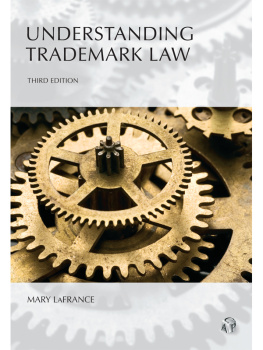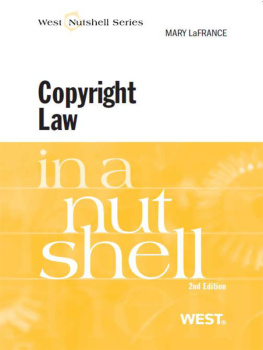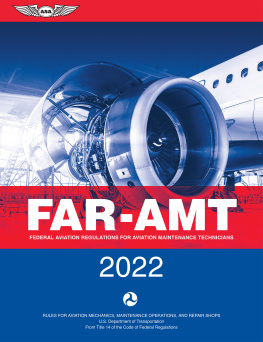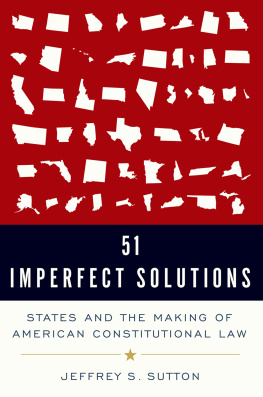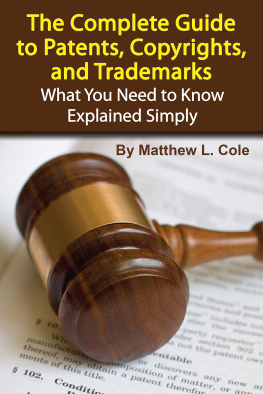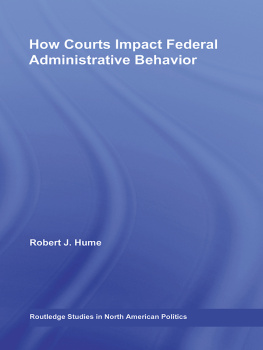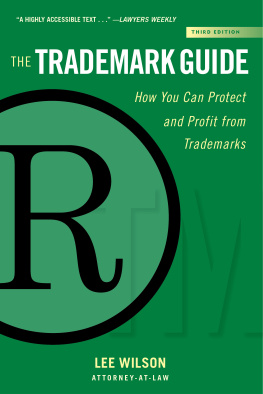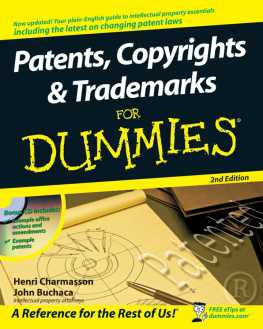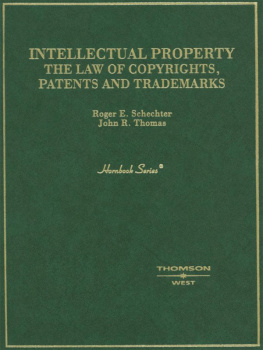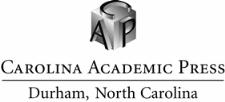[i/iii]
UNDERSTANDING TRADEMARK LAW
Third Edition
[iii/iv]
UNDERSTANDING TRADEMARK LAW
Third Edition
Mary LaFrance
IGTProfessor of Intellectual Property Law
William S. BoydSchool of Law
University of Nevada, Las Vegas
[iv/v]
Copyright 2016
Carolina Academic Press, LLC
All Rights Reserved
Library of Congress Control Number: 2016941552
ISBN: 9780327189886 (eBook)
Carolina Academic Press, LLC
700 Kent Street
Durham, NC 27701
Telephone (919) 489-7486
Fax (919) 493-5668
www.caplaw.com
Printed in the United States of America
Terms of Use
Your use of this electronic publication (eBook) is subject to the following terms and conditions. This eBook is for your personal use only. All access to and use of this eBook is subject to U.S. and international copyright law. All intellectual property rights are reserved to the copyright holder. Redistribution or duplication of this eBook to any other electronic media or a third party is strictly prohibited. Under no circumstances may you redistribute this eBook commercially or post this eBook on an intranet, internet or SharePoint site. Finally, use of this eBook is further subject to the terms and conditions of use which were accepted at the time you completed your purchase of this eBook from the point of purchase.
Hyperlink Key
In order to distinguish between the links to other sections within LexisNexis eBooks and external links to the Internet, we have added color coding to the links.
Following is a color key for the links:
Blue: Links inside the eBook
Green: External links to LexisNexison-line and the Internet
[v/vii]
Albert Joseph Leo LaFrance
1913-2015
The islands havent shifted since last summer,
even if I like to pretend they have
drifting, in a dreamy sort of way,
a little north, a little south, or sidewise
and that theyre free within the blue frontiers of bay.
William Butler Yeats
[vii/ix]
This text offers a broad introduction to the fundamental principles of the law of trademarks and unfair competition. Although deeply rooted in the common law of torts, modern trademark law has branched in many directions, as evidenced by the development of dilution and cybersquatting laws, as well as state and federal registration systems. Practitioners and students of trademark law today must be familiar with all of these branches and their various sources which include statutes as well as common law, and federal as well as state law.
Although trademark law has become increasingly federalized since the enactment of the Lanham Act in 1946, the federal law of trademarks and unfair competition has little preemptive effect on state law. As a result, many aspects of trademark and unfair competition law are governed by both state and federal law. The state and federal approaches often converge, and sometimes diverge, but despite the increasing scope of federal trademark and unfair competition law, state law remains important.
However, conflict may arise between, on the one hand, the state and federal regimes of trademark and unfair competition law and, on the other hand, the federal regimes of copyright and patent law. An understanding of trademark law, therefore, requires an understanding of its relationship with these other doctrines in particular, which applications of trademark or unfair competition law would so interfere with the congressional schemes of patent and copyright protection that the latter must be given preemptive effect, as illustrated by the denial of trademark protection to functional aspects of trade dress.
The law of trademarks and unfair competition constantly evolves in response to changes in commercial markets. For example, the globalization of markets for goods and services has led to the increased internationalization of trademark and unfair competition law. Federal law, for example, now considers certain foreign uses of trademarks in determining priority for federal registration and, conversely, recognizes that certain foreign activities may give rise to infringement claims under the Lanham Act. Federal law has also responded to the explosive growth of the Internet as a means for communication as well as a marketplace for goods and services. Although trademark law has traditionally protected the right of a trademark holder within the specific geographic markets where the mark is in use, such geographic boundaries are less relevant today, as brick-and-mortar locations are supplemented or displaced by Internet commerce. Internet activity can also blur the line between commercial activities subject to trademark regulation and expressive conduct that is protected by the First Amendment. In addition, activities such as keyword advertising and the use of social media raise fundamental questions about the meaning of trademark infringement.
For practitioners and students with no background in trademark and unfair competition law, this text may serve as a free-standing introduction. Those who already have some familiarity with these subjects will find the text to be a handy reference tool. Extensive footnoting and citation to authority is provided throughout, in order to assist those desiring to investigate a particular topic in greater depth.
[ix/x]
[1/2]
Trademark law recognizes exclusive rights to use marks that distinguish the goods and services of one manufacturer, merchant or service provider from those of others. A trademark is most often a brand name, logo, or slogan, but it can consist of any device that serves to distinguish goods or services. Colors, sounds, product packaging, aromas, musical phrases, and nonfunctional design features are all subject matter eligible for trademark protection.
Trademark law serves two purposes to protect consumers from being confused or deceived about the source of goods or services in the marketplace, and to protect the goodwill that merchants have developed in their trademarks. As the Supreme Court has noted:
[T]rademark law, by preventing others from copying a source-identifying mark, reduce [s] the customers costs of shopping and making purchasing decisions, for it quickly and easily assures a potential customer that this item the item with this mark is made by the same producer as other similarly marked items that he or she liked (or disliked) in the past. At the same time, the law helps assure a producer that it (and not an imitating competitor) will reap the financial, reputation-related rewards associated with a desirable product.
Historically, trademark law is part of the broader law of unfair competition, which is rooted in English common law. By the end of the twentieth century, United States trademark and unfair competition law had expanded the scope of their protection to encompass a wider array of source indicators, had begun to protect the goodwill of especially famous trademarks even in the absence of confusion or competition, and had become extensively codified at both the state and federal level. In spite of these changes, many aspects of trademark and unfair competition law still reflect their common law roots.
Unlike other types of intellectual property, such as patents and copyrights, trademark rights are not property rights in gross. A fundamental principle of [2/3] trademark law is that trademark rights arise only through the actual use of a mark to indicate the source of goods or services, and the public must actually recognize the mark as a source indicator in order for it to be protected. As noted in one of the Supreme Courts early trademark decisions: There is no such thing as property in a trade-mark except as a right appurtenant to an established business or trade in connection with which the mark is employed.

